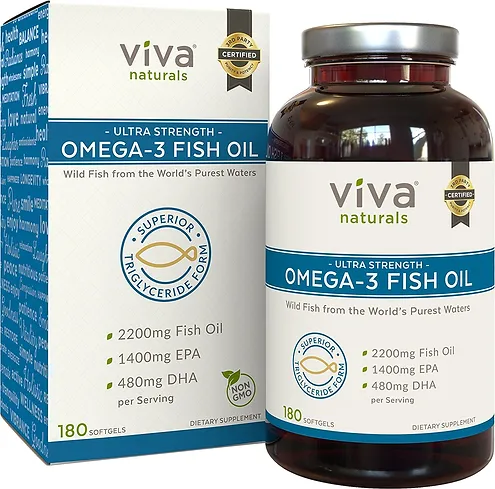Essential Oils for Sciatic Nerve Pain Relief
Sciatic nerve pain can be debilitating and greatly affect one’s quality of life. The pain can range from a mild ache to a sharp, shooting sensation that radiates down the leg. If you are looking for natural alternatives to alleviate the discomfort, essential oils may be worth considering. In this article, we will explore the use of essential oils for sciatic nerve pain relief and how they can help ease your symptoms.
Understanding Sciatic Nerve Pain
Before delving into the benefits of essential oils, it is important to understand what sciatic nerve pain is and what causes it. Sciatic nerve pain, also known as sciatica, occurs when the sciatic nerve, which is the longest nerve in the body, becomes irritated or compressed. The pain typically starts in the lower back and travels down the buttock and leg, following the path of the sciatic nerve. The most common cause of sciatic nerve pain is a herniated disc, but it can also be a result of spinal stenosis, muscle tightness, or injury.
Causes of Sciatic Nerve Pain
There are several possible causes of sciatic nerve pain. One common cause is a herniated disc, which occurs when the soft center of a spinal disc pushes through a crack in the tough outer layer, irritating the nearby nerve roots. This can happen due to age-related wear and tear or sudden injury. Another potential cause is spinal stenosis, a condition in which the spinal canal narrows, putting pressure on the spinal cord and nerves. This narrowing can be a result of aging, arthritis, or other degenerative conditions. Muscle tightness or spasms can also contribute to sciatic nerve pain, as can injuries such as fractures or dislocations of the spine.
Furthermore, sciatic nerve pain can sometimes be caused by pregnancy. During pregnancy, the growing uterus can put pressure on the sciatic nerve, leading to pain and discomfort. Additionally, certain lifestyle factors such as obesity and a sedentary lifestyle can increase the risk of developing sciatic nerve pain. Obesity can put extra strain on the spine and nerves, while a lack of physical activity can lead to muscle imbalances and tightness that can contribute to nerve compression.
Symptoms of Sciatic Nerve Pain

The symptoms of sciatic nerve pain can vary from person to person. Common symptoms include pain that radiates down the leg, numbness or tingling in the leg or foot, weakness in the leg or foot, and difficulty moving the leg or foot. The pain may worsen with specific movements, such as sitting or coughing, and it may be accompanied by lower back pain.
In some cases, sciatic nerve pain can also cause muscle weakness or loss of reflexes in the affected leg. This can make it difficult to perform daily activities such as walking or standing for long periods of time. Additionally, individuals with sciatic nerve pain may experience difficulty sleeping due to the discomfort and may find it challenging to maintain a normal exercise routine.
It is important to note that while sciatic nerve pain can be incredibly debilitating and uncomfortable, it is often temporary and can be managed with proper treatment and self-care. Seeking medical advice and following a comprehensive treatment plan can help alleviate symptoms and improve quality of life for individuals suffering from sciatic nerve pain.

The Role of Essential Oils in Pain Relief

Essential oils have been used for centuries in traditional medicine practices for their therapeutic properties. When it comes to pain relief, essential oils can be an effective natural alternative to conventional medications. Essential oils are highly concentrated plant extracts that contain volatile aromatic compounds. These compounds can interact with the body’s receptors and promote relaxation, reduce inflammation, and provide analgesic effects.
One of the key ways essential oils work is through inhalation or topical application. When inhaled, the aromatic molecules of essential oils stimulate the olfactory system, which directly communicates with the brain’s limbic system. This can trigger various emotional and physiological responses, including pain relief. The limbic system is responsible for regulating emotions, memory, and behavior, and by targeting this system, essential oils can have a profound impact on pain perception.
Topical application of essential oils is another popular method for pain relief. When applied to the skin, essential oils penetrate the dermal layers and enter the bloodstream, where their active compounds can target specific areas of discomfort. The skin is the body’s largest organ and has a rich network of blood vessels, making it an ideal route for delivering the beneficial properties of essential oils to the affected areas.
Here is a list of essential oils that can be helpful for managing sciatic pain:
- Lavender Oil: Lavender oil is known for its soothing and anti-inflammatory properties. It can help relax muscles and reduce pain associated with sciatica.
- Peppermint Oil: Peppermint oil has a cooling effect and can help relieve muscle tension and discomfort caused by sciatic pain.
- Eucalyptus Oil: Eucalyptus oil has anti-inflammatory and analgesic properties, making it effective in reducing pain and inflammation associated with sciatica.
- Rosemary Oil: Rosemary oil may help improve circulation and reduce muscle spasms, which can contribute to sciatic pain relief.
- Ginger Oil: Ginger oil has anti-inflammatory properties and may help reduce nerve pain and inflammation associated with sciatica.
- Chamomile Oil: Chamomile oil has soothing and anti-inflammatory properties that can help ease sciatic pain and promote relaxation.
- Frankincense Oil: Frankincense oil may help reduce inflammation and provide relief from sciatic pain when used in aromatherapy or diluted for massage.
- Helichrysum Oil: Helichrysum oil has anti-inflammatory and analgesic properties that can be beneficial for reducing sciatic pain and discomfort.
- Cypress Oil: Cypress oil may help improve circulation and reduce muscle spasms, making it useful for managing sciatic pain.
- Marjoram Oil: Marjoram oil has muscle-relaxing properties and can help ease muscle tension and pain associated with sciatica.
Benefits of Using Essential Oils for Pain Relief
The use of essential oils for pain relief offers several benefits. Firstly, they provide a natural alternative to pharmaceutical pain medications, which can come with unwanted side effects. Many over-the-counter and prescription pain medications can cause drowsiness, dizziness, and gastrointestinal issues. Essential oils, on the other hand, are generally well-tolerated and have a lower risk of adverse reactions.
Additionally, essential oils can reduce inflammation and promote relaxation, helping to alleviate both physical and emotional distress. Inflammation is a common underlying cause of pain, and by reducing it, essential oils can provide relief. Furthermore, the relaxing properties of certain essential oils can help to calm the mind and reduce stress, which can contribute to pain perception.
Furthermore, many essential oils possess antimicrobial properties, making them useful for preventing infections or speeding up the healing process in case of injury. Some essential oils, such as tea tree oil and lavender oil, have been found to have antimicrobial effects against a wide range of bacteria and fungi. This can be particularly beneficial for individuals with open wounds or cuts, as it can help prevent infections and promote faster healing.
In conclusion, essential oils have a long history of use in traditional medicine for pain relief. Their ability to interact with the body’s receptors, reduce inflammation, promote relaxation, and possess antimicrobial properties make them a valuable natural alternative to conventional pain medications. Whether inhaled or applied topically, essential oils can provide effective relief for a variety of pain conditions.







